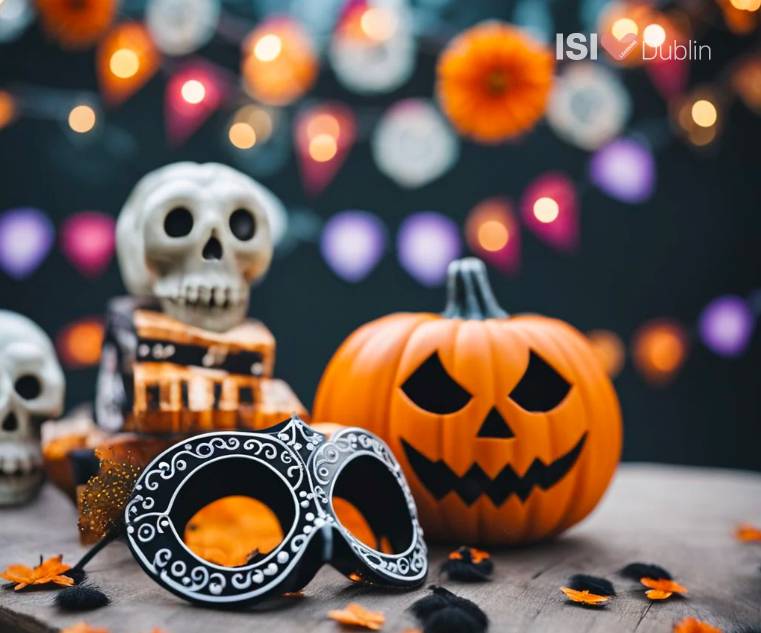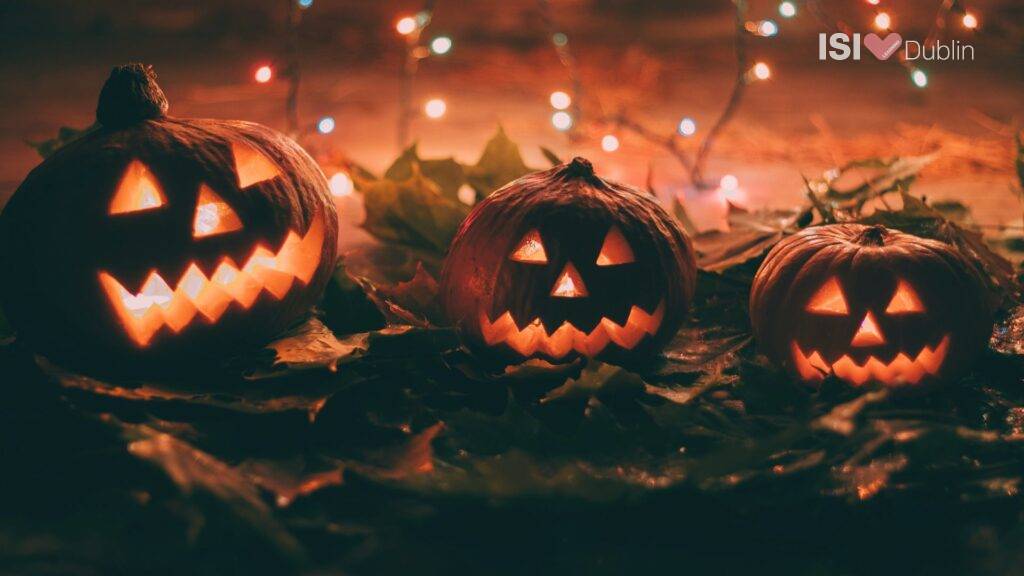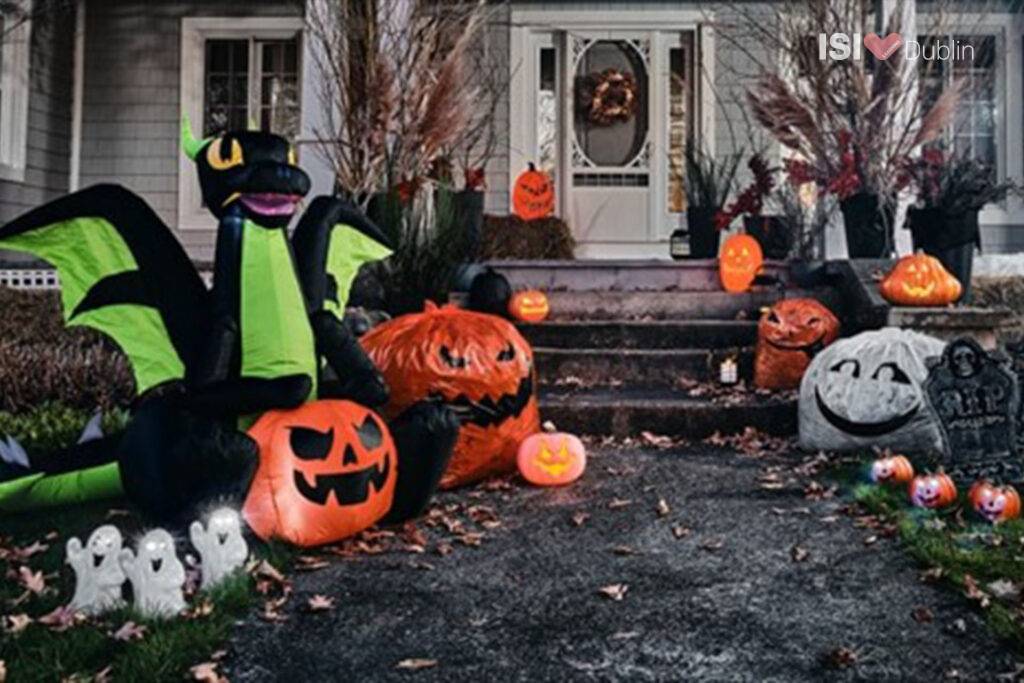Did you know that Halloween, celebrated all over the world today on October 31st, originated on our small little island in the Celtic festival known as Samhain? Traditionally marking the calendrical year here in Ireland, we have four seasonal Celtic festivals: Samhain, Imbolc, Bealtaine and Lughnasa, which I will explain to you over the series of four posts. In this blogpost, I will commence by explaining the meaning of Samhain to you, noting some similarities and differences to Mexico’s Day of the Dead.
Seasonally marking the end of the harvest (Lughnasa, pronounced “Lu-nasa”) and the beginning of winter here in Ireland, Samhain (pronounced “Sow-in”) was traditionally celebrated on November 1st. Indeed, Samhain is the very word for “November” in Irish Gaelic, and the word for the eve of Samhain in Irish Gaelic is Oíche Shamhna (pronounced “Ee-ha how-na”). As with many traditional festivals, however, the eve of this festival was when the real celebrating took place! A lot like the Mexican Day of the Dead, Dia de los Muertos (both celebrations occur in late October and early November, both holidays involve costumes, decorations, and celebrations with family and friends), Samhain is focused on death and the afterlife. Although today in Mexico, the Day of the Dead is a much more somber and reflective occasion than Samhain is here in Ireland (the former being recognised as an intangible cultural heritage of humanity by UNESCO), both holidays acknowledge the reality of death and encourage people to remember and honour their loved ones who have passed away.

You see, here in Ireland it has always been believed that at Samhain the division between this world and the supernatural otherworld is at its thinnest, allowing spirits to pass through. Traditionally, in Ireland, families would come together to honour their dead ancestors, while also warding off harmful spirits. People would wear costumes and masks to disguise themselves so that if they encountered any harmful spirits while out and about, the spirits wouldn’t see them as one of their own. So, where does the term Halloween come from? With the coming of Christianity to Ireland, there was an attempt by the former to “baptise the customs,” as the anthropologists say, and thus many Celtic and pagan traditions evolved into Christian celebration days. In the 8th century, a Christian Feast Day was created called All Hallows Day — or All Saints’ Day — on November 1st: “Hallow,” means “to make holy/to venerate.” The word Halloween is derived from the evening before All Hallows Day, “All Hallows Eve,” aka “Halloween”; most likely stemming from the Irish Gaelic for “little Hallow,” sincethe Irish Gaelic “ín,” pronounced “een,” means “little.” Hence, Hallow-een!
Without doubt, the Irish who had to emigrate to America en masse over the years due to famine, genocide, and pervasive subjugation by the British, helped to popularise the celebration of Halloween. But did you know that the Tirst Jack O’Lanterns, so synonymous with the holiday, were not actually carved from pumpkins, but from turnips? According to Irish legend, an Irish man — so parsimonious he was nick-named “Stingy Jack” — tried to trick the devil, and managed to on several occasions, but eventually failed. He was then, unwanted in either Heaven or Hell, cursed to roam the earth with only a burning coal in a carved-out turnip by the devil. When Irish immigrants arrived in America, they found that the pumpkin was more readily available than the turnip and far, far easier to carve-out too, and so the contemporary tradition of carving-out pumpkins with scary faces at Halloween to ward-off Stingy Jack arriving on your doorstep began. That being said, I think we can all agree that carved-out turnips look much, much scarier than carved-out pumpkins — and guess what: they last much, much longer too!
So, come on, start carving your very own Jack O’Lantern! Get down to your local grocery store or supermarket now and ask for a good “auld” (Hiberno-English for “old” — see Conor’s last post) Irish turnip . . . It will last until Halloween, no doubt!



